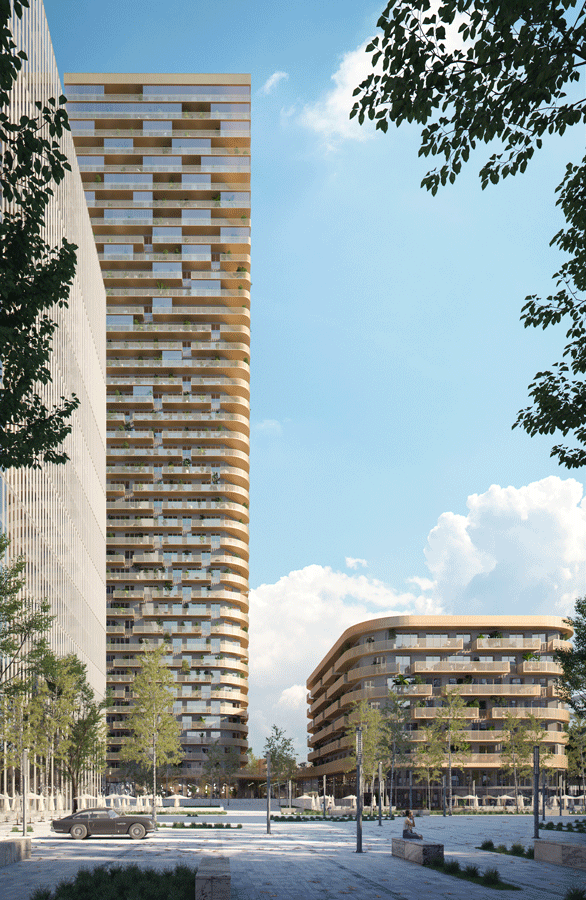Yusuhara, Japan
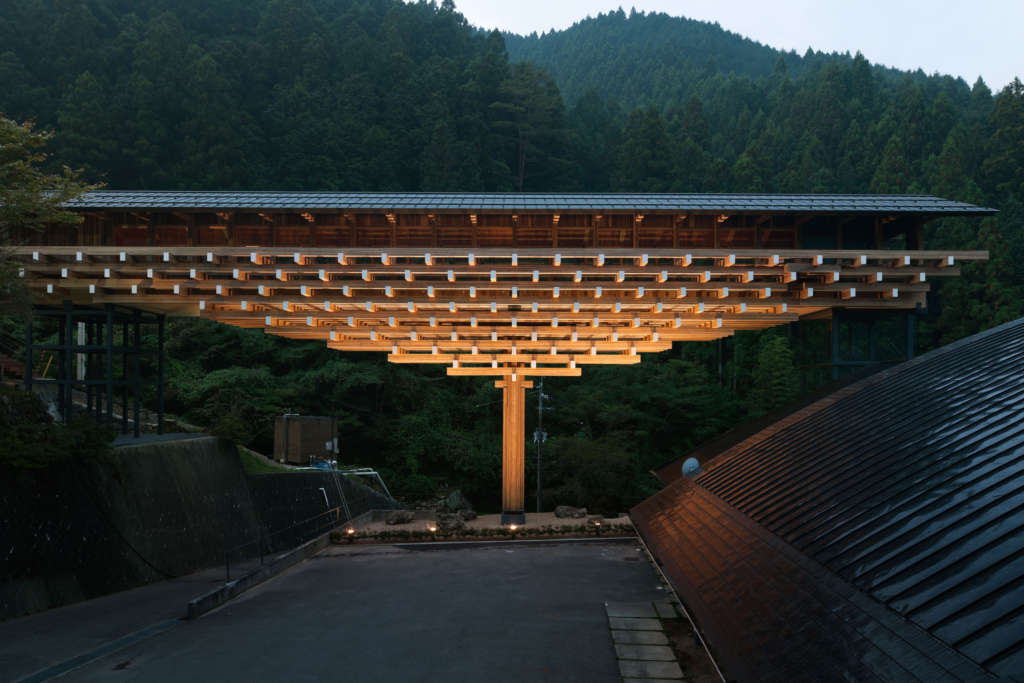
The following description is courtesy of Kengo Kuma & Associates.
Bridge-Shaped Museum that Connects Two Public Facilities
Yusuhara Wooden Bridge Museum connects a hotel and a spa operated by the town, which had been separated by a cliff and a road. The museum functions not only as the skywalk between the two facilities but also as accommodations, work and exhibition rooms that cater to the artist-in-residence program, thus bridging cultures of the world as well.
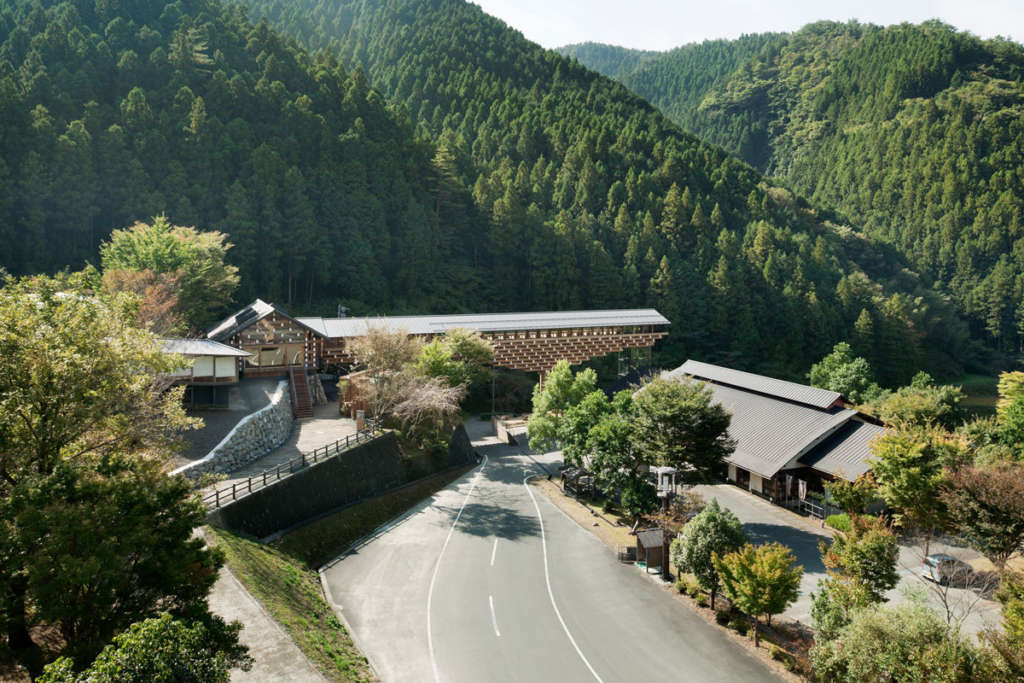
New Form of Framing with Assembly of Laminated Wood with Small Section
On designing a wooden bridge abundantly using locally produced sugi (red cedar), we sought out a structure to accommodate laminated timber with small sections, rather than bridging an oppressing-looking crossbeam with enormous sections so that we could realize a bridge’s presence that could merge into the forest around it. As we studied, we came to the conclusion that the whole structure could be achieved by pulling out the accumulation of 180×300 “hanegi” (corbel). Furthermore, the bridge could be balanced at the centre of the pier and be fitted to the geographical features of the site. This is how the new type of frame construction came into being. On the edge of the hotel’s end we set up a studio gallery and lodging in [the] roof structure built in the inverted form of this construction.
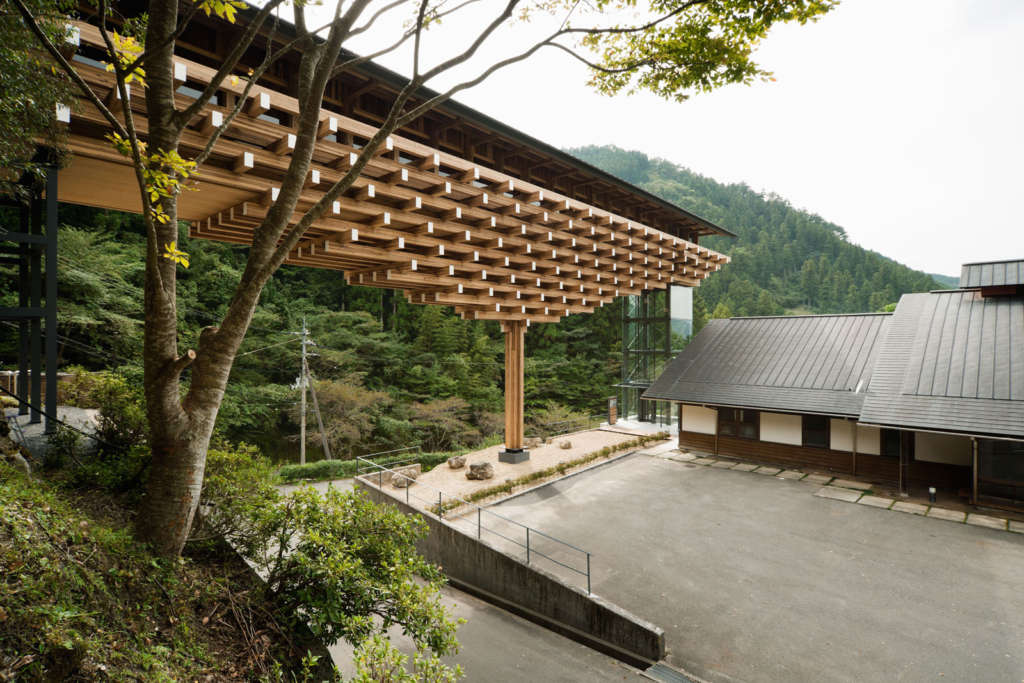
Linking Traditional and Contemporary Expressions
Accumulation of hangevi evokes the traditional construction method of “to-kyo” (square framing) employed in Japan and China, which was devised to support the load from the eaves. By repeating this method persistently to the scale of a bridge, we were able to present a completely new expression of architecture while keeping its bonafide Asian appearance.
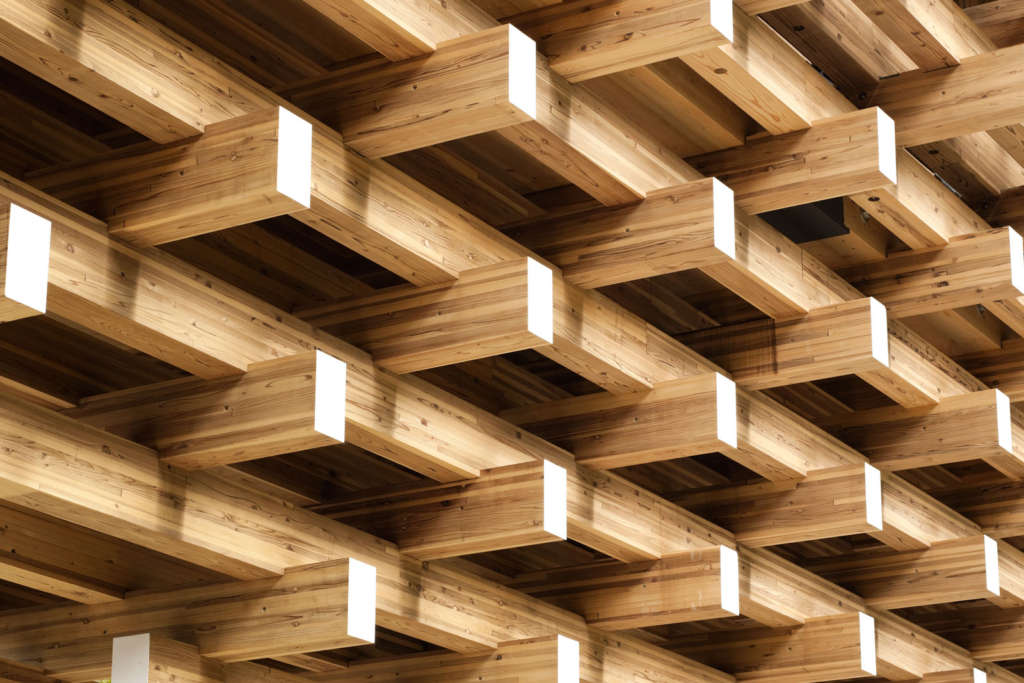
Laminated wood itself embodies a unit of “masonry in wood”. In this architecture, this composition into a larger dimension and achieves “masonry structure in wood” bridging out the new expression and potential of laminated wood.
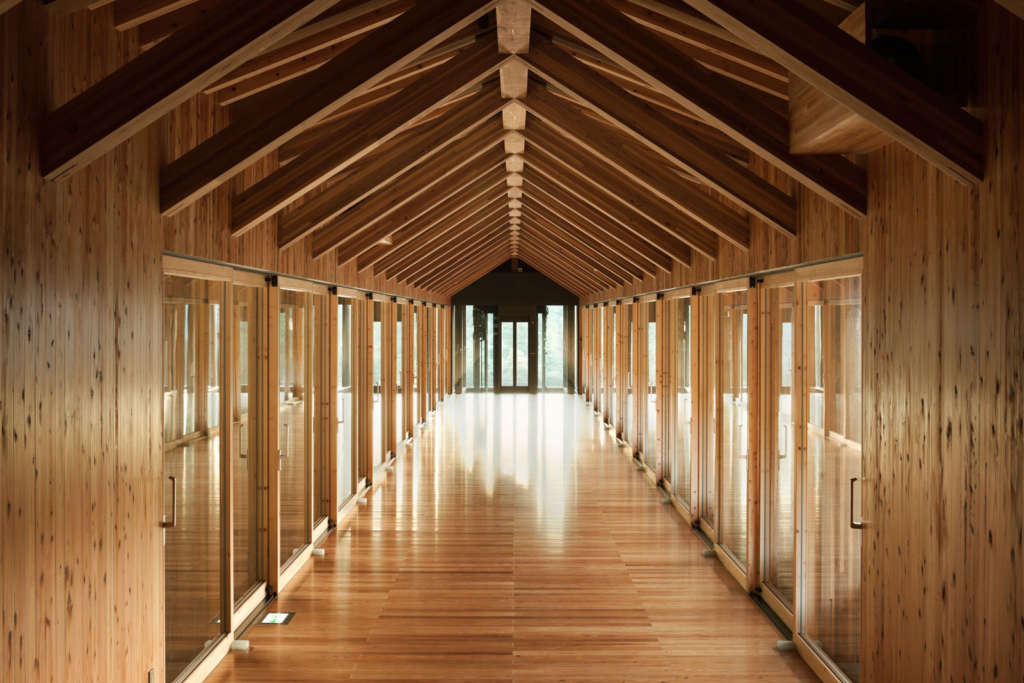
Connecting Varied Themes
The project also aims to “bridge” various issues of the time – revitalization of the local culture, urban design, technique for frame construction, application of natural materials in the traditional design – with one architectural work.
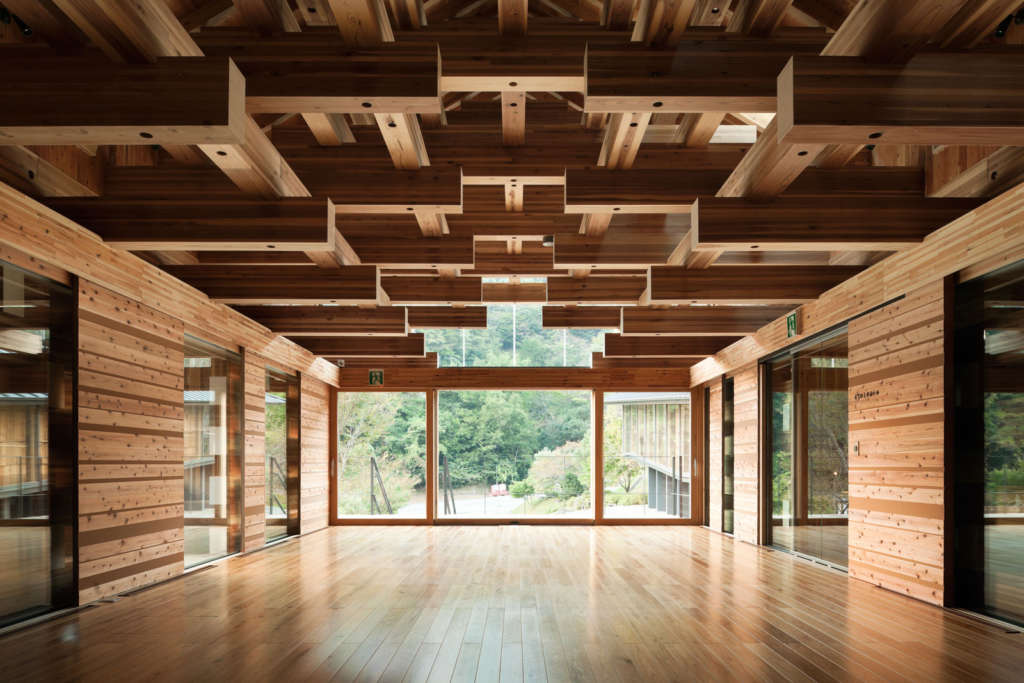
Project Information
Name of Project: Yusuhara Wooden Bridge Museum
Location: 3799-3 Taro-gawa Yusuhara-cho, Takaoka-gun, Kochi Prefecture
Client:Tomio Yano, Town Mayor of Yusuhara
Type of Project:new construction (extension from existing )
Principal Use:exhibition space
Design and Supervision:Kengo Kuma & Associates
Structure:Main structure/wood, partly steel frame, reinforced concrete,
Pile or Foundation: Mat and direct foundation
Number of Stories:1 underground, 2 stories above
Site area: 14,736.47㎡
Built area:574,15㎡ (total with the existing part: 1,946.97㎡)
Total area:445.79㎡ (total with the existing part: 2,540.23㎡)
Floor area for each story:B1F:14.85㎡ 1F:68.21㎡ 2F:342.66㎡
Height of stories: B1 4,150mm 1F: 9,465mm
Height of ceilings:B1F(connection part to the hot spring:2,100mm ) B1F (control room): 2,300mm
1F: 2,300mm 2F (bridging corridor): 2,758mm 2F (gallery room): 5,056mm 2F (bridge): 3,705mm)
Maximum height: 13,780mm
Maximum eave height:12,680mm
Supervision Co-operator:K’s design
Structure:Katsuo Nakata & Associates
Utilities, Equipment:Sigma Facility Design
Construction:Shimanto Sogo Construction
Electricity:Showa Denki Kogyo
Air condition and hygiene: Kansai Setsubi
Design Period:2009.08~2009.11
Construction Period:2010.02~2010.09
Construction cost (including facilities):331,150,050 JPY
Gallery Opening Hours: 8:30- 16:00
Tel: 0889-65-0489

